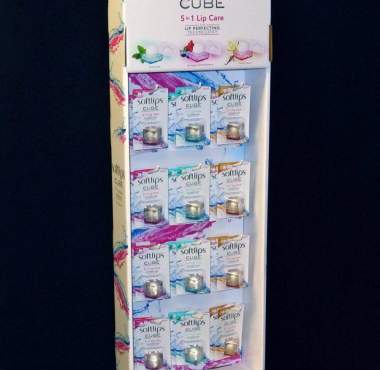Key Considerations When Designing a Merchandiser

You’re walking down the aisle of a store, you see shelves lined with products. You’re in a rush, not in the shopping mood, ready to get what’s on your list and get out.
Sound familiar?
You’re not alone. In fact, it’s important to note that most consumers share this mindset. So how do you, as a brand manager, ensure your product stands out? Put it on an amazing point-of-sale display.
That’s where merchandisers come into play. Simply put, a merchandiser holds and displays your product. The display can be as simple or complex as you’d like it to be. A merchandiser adds value and context to your brand; they can be designed to promote campaigns or feature messaging that wouldn’t otherwise fit on the label of your product.
Whatever type, size or quantity of product you are selling, ensuring your brand gets noticed in-store should be a priority. A point-of-sale display is a great way to make an impression on potential customers, convincing them to stop and look further into your product when they are in the busy shopping mindset.
Before getting started, there are a few things to consider when designing a merchandiser. First, determine what type of product are you selling, and who are you selling it to. This will help not only lead the aesthetic of the merchandiser, but will help determine size and how it will be assembled. From there, the display team can recommend details and other features that will further enhance your product’s display presence. The available space of the retail location is also important to take into consideration. Though it’s possible to create a custom merchandiser for just about any space constrictions, designing it to fit the space is key.
Lastly, being upfront with your budget is crucial. If you have a limited budget, the team needs to be aware during the planning stage so they are able to design a product that still accomplishes your goals, while keeping your finances in mind. Additionally, it’s important to think about your return on your investment. If your product sells at a low profit margin, consider choosing a low-cost merchandiser that still effectively displays the product. If your product sells at a higher profit margin, splurging on a high-quality piece might be a better investment.
At Hawver Display, our team of passionate professionals will assess your business goals and create a custom solution to make your product stand out among in-store competition. Contact us today to get started.